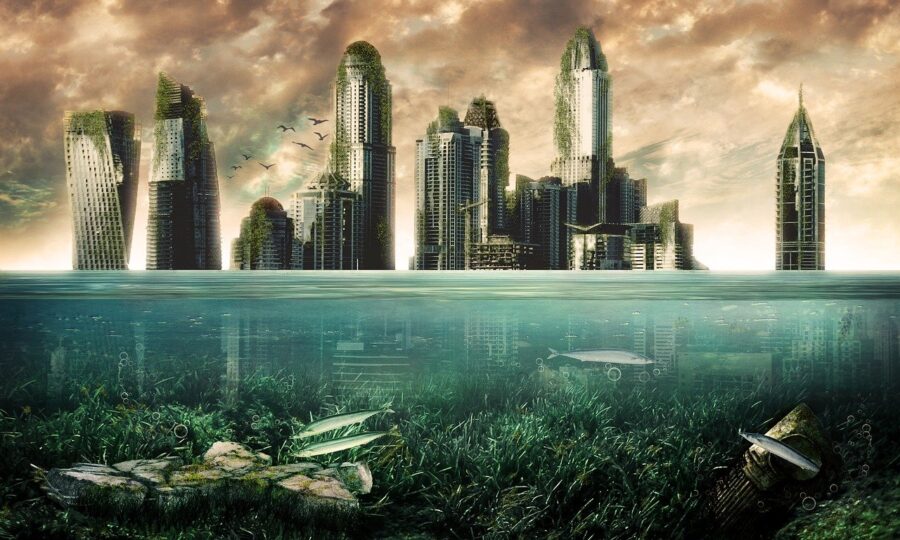Underground Climate Change Is Going To Start Collapsing Cities?

If you live in the city, it might be time to start looking at country cottages in the middle of nowhere—far away from other people and the constant imminent danger that continues to pop up in the world’s metropolitan areas. According to Science Alert, in a few years, the cities may not be the safest place to live, and not because they’re on the verge of sinking into the ground or sliding into the ocean (although, that, too), but because underground climate change is on the rise and threatening to collapse cities all over the world.
Underground climate change could create uneven terrain within the foundation that city buildings are built on, which could make them fall down.
Just as we think we are making some progress on battling climate change, scientists discover something new for us to worry about. The earth beneath our feet is heating up, causing the ground to shift and potentially damaging the very infrastructure that supports our urban life. Recent research conducted by civil engineer Alessandro Rotta Loria of Northwestern University highlights the alarming impact of subsurface urban heat islands on buildings, bridges, and transport systems.
Why Are Urban Cities In Danger?
Cities rely on extensive underground networks, including subway systems, pipelines, and electrical cables, to function efficiently. These systems release significant amounts of heat into the ground, raising ground temperatures over time, aka, creating underground climate change.
Rotta Loria wanted to study the effects these underground systems had on the infrastructure of our cities, so he studied the Chicago Loop district and used a 3D computer model to simulate the subsurface environment.
Recent research conducted by civil engineer Alessandro Rotta Loria of Northwestern University highlights the alarming impact of subsurface urban heat islands on buildings, bridges, and transport systems.
The research findings reveal that rising temperatures have led to ground deformations. The artificially added heat from industrialized society has strained foundations and could potentially affect the performance of construction materials.

In other words, underground climate change could create uneven terrain within the foundation that city buildings are built on, which could make them fall down.
While the slow-moving, heat-related deformations are unlikely to cause immediate building collapses, the cumulative effects of underground climate change over time can have detrimental consequences. Subtle subsurface changes of only a few millimeters can compromise the durability and performance of structures.
Chicago Is At High Risk
It could get particularly bad for Chicago. While scientists have been aware of the potential for underground climate change for years, most of Chicago’s buildings were built in the 1920s and weren’t created to withstand the temperature variations we are seeing today.
In particular, the fine-grained clay sediments present in Chicago’s soil are particularly vulnerable to shrinking or swelling with heat and water, exacerbating the issue even further.
But Chicago isn’t the only metropolitan area that needs to worry about underground climate change. Scientists have documented subsurface heat islands in cities such as Amsterdam, Istanbul, Nanjing, and Berlin. Almost every major city in the world has implemented underground networks such as subway systems, pipelines, and electric cables, which means that any city could potentially be at risk of experiencing higher underground temperatures raised by these infrastructures.
Recognizing the potential threats posed by underground climate change, Rotta Loria emphasizes the importance of mitigating these impacts. Ground deformations and temperature variations can result in cracks and excessive foundation settlements that were previously unrecognized.
Combatting Underground Climate Change
One potential solution gaining traction is heat recycling, where waste heat from transport systems like the Paris Metro is repurposed to heat buildings and water systems. This innovative approach presents a feasible method to address underground climate change and its consequences.












